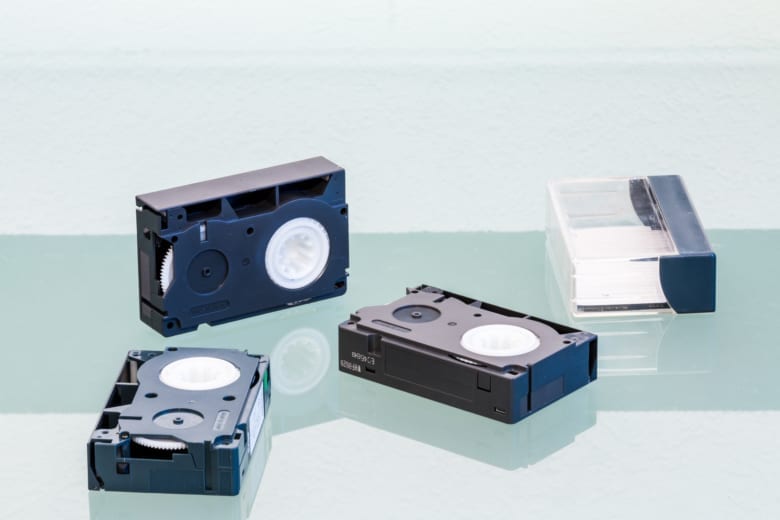VHS-C tapes are a popular video tape format that we see quite often at EverPresent. We have digitized thousands of these tapes and have come to know them quite well. Here are a few facts about VHS-C tapes that could be useful:
- The VHS-C format was introduced in 1982 by Panasonic.
- The ‘C’ in VHS-C literally stands for ‘compact’ as it is supposed to be a compact version of the VHS tape.
- VHS-C tapes are played in the same VCR machines that play VHS tapes. The only difference is that the smaller tapes need an adaptor before they can be played. The adaptor looks like a regular VHS cassette but has a slot for the VHS-C tape to go.
- The magnetic video tape used in VHS-C tapes is the exact same kind used in VHS tapes.
- These tapes have a shorter run time than a standard VHS tape. Whereas a a standard VHS tape can record 120 minutes of footage, a VHS-C tape is limited to 30 minutes for most models.
- Due to the smaller size of the tapes, a smaller and more versatile camcorder could be used for VHS-C tapes.
- Tape slackening is a problem we often encounter when digitizing VHS-C tapes. Tape slackening occurs when the magnetic tape unspools slightly inside the cassette (early models of the VHS-C did not have a mechanism to prevent this). If not identified early enough, the loose tape can become damaged in playback.
- VHS-C tapes competed directly with Video8 tapes during their tenure. Though roughly the same size, Video8 tapes are slightly higher quality. Despite this, VHS-C tapes had a huge advantage in the consumer market because they can be played in a standard VCR.
If you have a story to tell about some of your VHS-C tapes or you simply want to find out more information about the format or our capture process, give us a call! You can reach us at 617-505-1132 or via email at [email protected].

